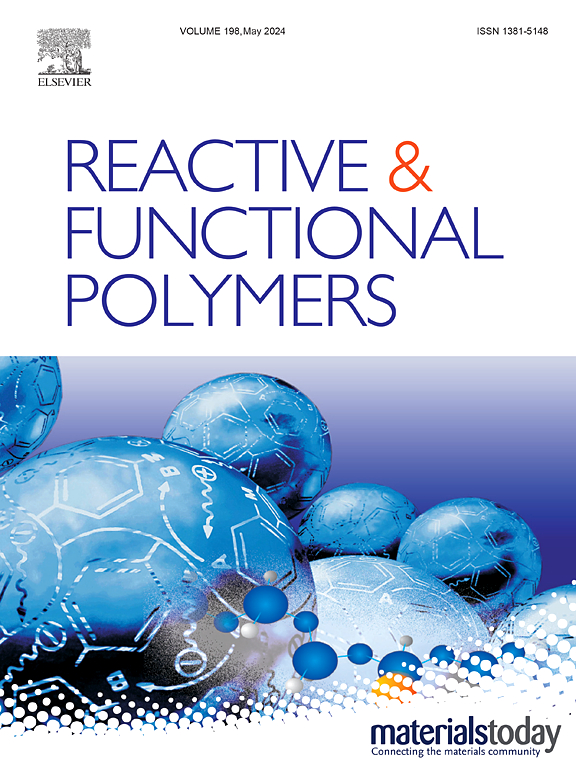HASc-responsive dual-drug nano-particles for co-delivery of Pt(II) and BAI for combination therapy of tumors
IF 4.5
3区 工程技术
Q1 CHEMISTRY, APPLIED
引用次数: 0
Abstract
In this study, ascorbic acid (HASc)-responsive nano-particles were designed to co-deliver the ferroptosis inducer Baicalin (BAI) and the chemotherapeutic drug cisplatin (Pt(II)) to tumor sites, aiming for a synergistic effect of chemotherapy(CT) and ferroptosis. Using CMCS as the carrier, the small-molecule pro-drug cis-Pt(IV)-COOH was grafted onto the carrier to create an amphiphilic polymer pro-drug. Single-drug nano-particles M(Pt) and dual-drug nano-particles M(BAI/Pt) were obtained by ultrasonically self-assembling BAI encapsulated in hydrophobic cores. The M(BAI/Pt) exhibited an average diameter of 211.37 3.01 nm, a polydispersity index (PDI) of 0.196 0.015, and a surface charge of −14.93 0.72 mV, demonstrating excellent stability. Given that cis-Pt(IV)-COOH is sensitive to HASc, the nanoparticles could quickly release Pt(II) with 83.22 % efficiency in simulated tumor cells. Meanwhile, the nanoparticles disintegrated and released BAI with 84.35 % efficiency as well. BAI can induce the accumulation of lipid peroxides by down-regulating GPX4, while Pt(II) contributes to iron ion accumulation. The combined treatment strategy aims to achieve an effective synergistic approach between chemotherapy and ferroptosis. In vitro toxicity studies indicated that the M(BAI/Pt1–1) exhibited significant cytotoxicity, synergistic impact (CI = 0.94) and strong selectivity (SI = 1.60) against 4 T1 cells. Mitochondrial membrane potential assessments and intracellular ROS and MDA analyses indicated that the M(BAI/Pt1–1) generated substantial ROS, causing mitochondrial structural damage and lipid peroxidation in 4 T1 cells. The M(BAI/Pt1–1) induced ferroptosis in 4 T1 cells by downregulating GPX4 expression and decreasing GSH levels, ultimately inhibiting in vitro tumor cell proliferation effectively. Consequently, these nano-particles provide fresh strategy to cancer treatment by combining chemotherapy with ferroptosis.

求助全文
约1分钟内获得全文
求助全文
来源期刊

Reactive & Functional Polymers
工程技术-高分子科学
CiteScore
8.90
自引率
5.90%
发文量
259
审稿时长
27 days
期刊介绍:
Reactive & Functional Polymers provides a forum to disseminate original ideas, concepts and developments in the science and technology of polymers with functional groups, which impart specific chemical reactivity or physical, chemical, structural, biological, and pharmacological functionality. The scope covers organic polymers, acting for instance as reagents, catalysts, templates, ion-exchangers, selective sorbents, chelating or antimicrobial agents, drug carriers, sensors, membranes, and hydrogels. This also includes reactive cross-linkable prepolymers and high-performance thermosetting polymers, natural or degradable polymers, conducting polymers, and porous polymers.
Original research articles must contain thorough molecular and material characterization data on synthesis of the above polymers in combination with their applications. Applications include but are not limited to catalysis, water or effluent treatment, separations and recovery, electronics and information storage, energy conversion, encapsulation, or adhesion.
 求助内容:
求助内容: 应助结果提醒方式:
应助结果提醒方式:


